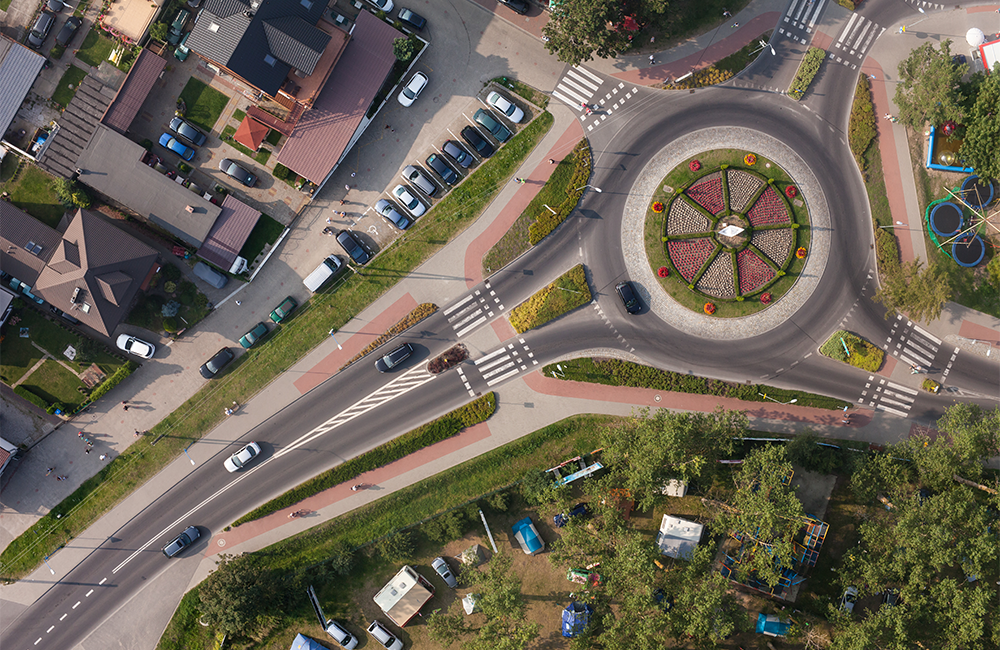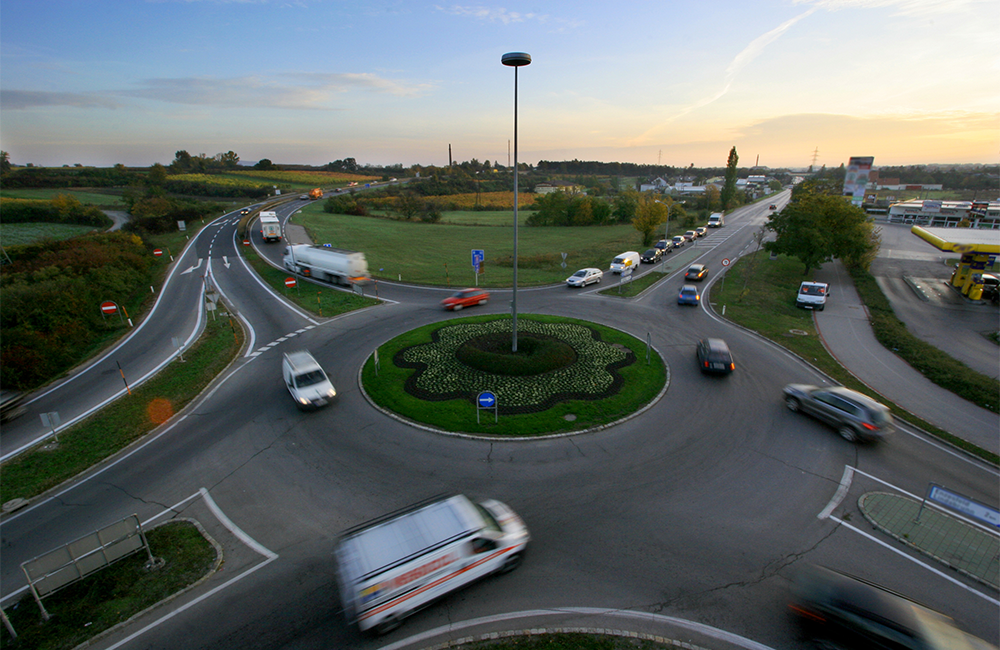For U.S. intersections with identified safety issues, traffic flow challenges or other traffic calming and pedestrian mobility needs, modern roundabouts can be used as an efficient solution, and they are safer and generally superior to traditional signalized intersections for many reasons:
Increased safety. Roundabouts can save lives by reducing fatalities, crash frequency and crash severity, compared to standard stop or signal-controlled intersections.
Increased capacity. Compared to a similarly sized traditional intersection with traffic signals, in the right settings, more vehicles are able to travel through a roundabout each day during peak traffic flow conditions.
Reduced traffic speeds. The relatively tight radius of the modern roundabout forces drivers to slow down, and calms traffic as drivers enter the circle and negotiate a curve sharp enough to slow speeds to 15-20 mph in urban settings and 25-30 mph in rural settings.
Improved pedestrian safety and mobility. Those same reduced travel speeds, combined with refuge islands and shorter crosswalks, allow much safer and easier crossings by pedestrians and bicyclists.
Reduced wait times. By replacing stop-and-go situations with yield situations, vehicle queues and delays are greatly reduced — especially during off-peak periods, when traffic signals are less efficient.
Better traffic flow. Several studies from across the U.S. have reported significant improvements in traffic flow following conversion of traditional intersections to modern roundabouts.
Better for the environment. The shift from stop-and-go situations to yield situations means there is less idling, which reduces vehicle emissions as well as fuel consumption.
Smaller footprint. Roundabouts may reduce the amount of pavement required compared to traditional intersections. Less pavement means less stormwater runoff for a smaller ecological footprint.
More cost-effective. While initial construction costs might be higher for a roundabout in a retrofit situation (the expense often is comparable in new installations), a roundabout generally has lower operating and ongoing maintenance costs than signalized intersections as there is no signal hardware to power, maintain and modernize.



